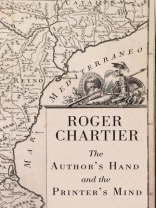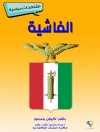In Early Modern Europe the first readers of a book were not those
who bought it. They were the scribes who copied the author’s
or translator’s manuscript, the censors who licensed it, the
publisher who decided to put this title in his catalogue, the copy
editor who prepared the text for the press, divided it and added
punctuation, the typesetters who composed the pages of the book,
and the proof reader who corrected them. The author’s hand
cannot be separated from the printers’ mind.
This book is devoted to the process of publication of the works
that framed their readers’ representations of the past or of
the world. Linking cultural history, textual criticism and
bibliographical studies, dealing with canonical works – like
Cervantes’ Don Quixote or Shakespeare’s plays –
as well as lesser known texts, Roger Chartier identifies the
fundamental discontinuities that transformed the circulation of the
written word between the invention of printing and the definition,
three centuries later, of what we call ‘literature’.
Tabla de materias
Preface
Part I: The Past in the Present
1. Listen to the Dead with Your Eyes
2. History: Reading Time
3. History and Social Science: A Return to Braudel
Part II: What is a Book?
4. The Powers of Print
5. The Author’s Hand
6. Pauses and Pitches
7. Translation
Part III: Texts and Meanings
8. Memory and Writing
9. Paratext and Preliminaries
10. Publishing Cervantes
11. Publishing Shakespeare
12. The Time of the Work
Sobre el autor
Roger Chartier is professor of history at the Collège de
France, Director of Studies at the École des hautes
études en sciences sociales and Annenberg Professor of History
at the University of Pennsylvania.












